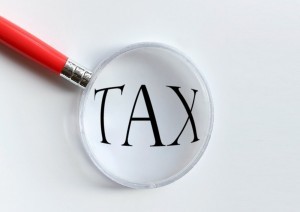If you’ve not read out initial blog on charging Value Added Tax in the UK, it’s probably best to read that first – you can do so here
So, now you’re up to speed on what VAT is supposed to do, how it works and that there are three different rates of VAT. Just to make things nice and complicated, the UK Government decided to shake up the system back in 2002 by introducing Flat Rate VAT.
As we know, the idea of VAT is that a business will charge it to all their customers, but pay it to all their suppliers. If you’ve charged more VAT than you’ve taken, then you pay the difference to HMRC. If you pay more than you take, then you can claim the VAT back. This obviously takes a lot of accounting and administration to add up all the figures and see where the final balance comes out, so the Government introduced Flat Rate VAT to simplify the system.
The idea of the Flat Rate system was that businesses could pay a certain percentage of all the VAT they took to HMRC and keep the rest. Not only did it save time and a lot of work, but it would still bring HMRC about the same amount of money and businesses would like it because they got to keep some of the VAT charged to customers.
The rates for flat rate VAT vary dependent on what type of business you have, but if you have a company that brings in £12,000 per month, £2,000 of that would be VAT charged at 20% – £10,000 + 20% VAT = £12,000. If your flat rate VAT was 10%, then you’d only have to hand over £1,200 of your VAT take each month to The Taxman, meaning businesses got a cash boost of around £9,600 per year without the Government losing out.
All this changed, however, last November. The system was updated, as many small businesses run as service providers, meaning that large amounts of their business is digital and they don’t have to buy raw materials. This means that businesses like design agencies or IT consultancies have limited costs, as they do a lot of their business online or digitally. The government changed the rules so that “limited cost traders” that don’t have to spend a lot on raw materials and therefore don’t pay a lot of VAT wouldn’t be in a position to keep significant amounts of VAT money, as listed in the example above.
The new rules that were brought in earlier in the year mean that limited cost traders now have a flat rate of 16.5% to pay. If we look at the example earlier, a company that takes £12,000 a month including VAT would now have to hand £1,980 of their monthly VAT take over to HMRC, meaning the company would benefit by £240 per year as opposed to £9,600.
Many small businesses that are classed as limited cost traders are concerned as they still have to pay VAT to other businesses, such as IT firms, marketing agencies, accountants and consultants, as these service providers don’t count towards the VAT offset. If you’re required to pay VAT, then you need to look at the amount you spend to other businesses each month and how much you bring in as VAT to see if it’s worth working under the Flat Rate Scheme or if you could limit the amount that you have to pay to HMRC by going back to the more complicated, two stage system.

